
| Vehicle | Curb weight | Difference from world's smallest | Weight to power ratio | 0—60 mph acceleration ratio | Consumption ratio |
|---|---|---|---|---|---|
| 2.8i V6 |
1885 kg / 4156 lbs |
1460 kg (3219 lbs) heavier | 6 kg to 1 hp | - | - |
| 2.0i |
1885 kg / 4156 lbs |
1460 kg (3219 lbs) heavier | 9 kg to 1 hp | - | - |
| Vehicle | 2.8i V6 |
|---|---|
| Curb weight |
1885 kg / 4156 lbs |
| Difference from world's smallest | 1460 kg (1460 lbs) heavier |
| Weight to power ratio | 6 kg to 1 hp |
| 0—60 mph acceleration ratio | - |
| Consumption ratio | - |
| Vehicle | 2.0i |
| Curb weight |
1885 kg / 4156 lbs |
| Difference from world's smallest | 1460 kg (1460 lbs) heavier |
| Weight to power ratio | 9 kg to 1 hp |
| 0—60 mph acceleration ratio | - |
| Consumption ratio | - |
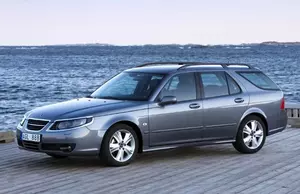
| Vehicle | Curb weight | Difference from world's smallest | Weight to power ratio | 0—60 mph acceleration ratio | Consumption ratio |
|---|---|---|---|---|---|
| 2.0i |
1885 kg / 4156 lbs |
1460 kg (3219 lbs) heavier | 9 kg to 1 hp | - | - |
| Vehicle | 2.0i |
|---|---|
| Curb weight |
1885 kg / 4156 lbs |
| Difference from world's smallest | 1460 kg (1460 lbs) heavier |
| Weight to power ratio | 9 kg to 1 hp |
| 0—60 mph acceleration ratio | - |
| Consumption ratio | - |
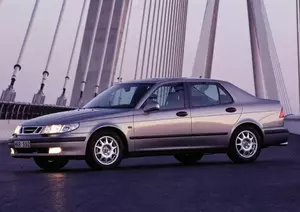
| Vehicle | Curb weight | Difference from world's smallest | Weight to power ratio | 0—60 mph acceleration ratio | Consumption ratio |
|---|---|---|---|---|---|
| 2.2 TDi |
1600 kg / 3528 lbs |
1175 kg (2591 lbs) heavier | 13 kg to 1 hp | 152 kg/s (335 lbs/s) |
239 kg/L (527 lbs/L) |
| 2.3 t |
1715 kg / 3782 lbs |
1290 kg (2845 lbs) heavier | 9 kg to 1 hp | 193 kg/s (426 lbs/s) |
182 kg/L (401 lbs/L) |
| 3.0 TiD |
1685 kg / 3715 lbs |
1260 kg (2778 lbs) heavier | 10 kg to 1 hp | 191 kg/s (421 lbs/s) | - |
| Vehicle | 2.2 TDi |
|---|---|
| Curb weight |
1600 kg / 3528 lbs |
| Difference from world's smallest | 1175 kg (1175 lbs) heavier |
| Weight to power ratio | 13 kg to 1 hp |
| 0—60 mph acceleration ratio | 152 kg/s (335 lbs/s) |
| Consumption ratio |
239 kg/L (527 lbs/L) |
| Vehicle | 2.3 t |
| Curb weight |
1715 kg / 3782 lbs |
| Difference from world's smallest | 1290 kg (1290 lbs) heavier |
| Weight to power ratio | 9 kg to 1 hp |
| 0—60 mph acceleration ratio | 193 kg/s (426 lbs/s) |
| Consumption ratio |
182 kg/L (401 lbs/L) |
| Vehicle | 3.0 TiD |
| Curb weight |
1685 kg / 3715 lbs |
| Difference from world's smallest | 1260 kg (1260 lbs) heavier |
| Weight to power ratio | 10 kg to 1 hp |
| 0—60 mph acceleration ratio | 191 kg/s (421 lbs/s) |
| Consumption ratio | - |
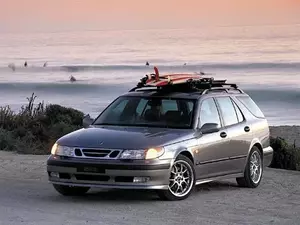
| Vehicle | Curb weight | Difference from world's smallest | Weight to power ratio | 0—60 mph acceleration ratio | Consumption ratio |
|---|---|---|---|---|---|
| 2.3 t |
1660 kg / 3660 lbs |
1235 kg (2723 lbs) heavier | 9 kg to 1 hp | 198 kg/s (437 lbs/s) |
173 kg/L (381 lbs/L) |
| 2.2 TDi |
1510 kg / 3330 lbs |
1085 kg (2393 lbs) heavier | 13 kg to 1 hp | 139 kg/s (306 lbs/s) |
225 kg/L (496 lbs/L) |
| 2.3 T |
1660 kg / 3660 lbs |
1235 kg (2723 lbs) heavier | 7 kg to 1 hp | 241 kg/s (531 lbs/s) |
184 kg/L (406 lbs/L) |
| 3.0 TiD |
1665 kg / 3671 lbs |
1240 kg (2734 lbs) heavier | 9 kg to 1 hp | 187 kg/s (412 lbs/s) | - |
| Vehicle | 2.3 t |
|---|---|
| Curb weight |
1660 kg / 3660 lbs |
| Difference from world's smallest | 1235 kg (1235 lbs) heavier |
| Weight to power ratio | 9 kg to 1 hp |
| 0—60 mph acceleration ratio | 198 kg/s (437 lbs/s) |
| Consumption ratio |
173 kg/L (381 lbs/L) |
| Vehicle | 2.2 TDi |
| Curb weight |
1510 kg / 3330 lbs |
| Difference from world's smallest | 1085 kg (1085 lbs) heavier |
| Weight to power ratio | 13 kg to 1 hp |
| 0—60 mph acceleration ratio | 139 kg/s (306 lbs/s) |
| Consumption ratio |
225 kg/L (496 lbs/L) |
| Vehicle | 2.3 T |
| Curb weight |
1660 kg / 3660 lbs |
| Difference from world's smallest | 1235 kg (1235 lbs) heavier |
| Weight to power ratio | 7 kg to 1 hp |
| 0—60 mph acceleration ratio | 241 kg/s (531 lbs/s) |
| Consumption ratio |
184 kg/L (406 lbs/L) |
| Vehicle | 3.0 TiD |
| Curb weight |
1665 kg / 3671 lbs |
| Difference from world's smallest | 1240 kg (1240 lbs) heavier |
| Weight to power ratio | 9 kg to 1 hp |
| 0—60 mph acceleration ratio | 187 kg/s (412 lbs/s) |
| Consumption ratio | - |
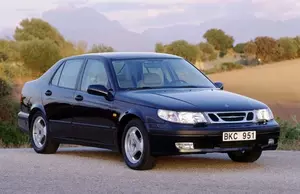
| Vehicle | Curb weight | Difference from world's smallest | Weight to power ratio | 0—60 mph acceleration ratio | Consumption ratio |
|---|---|---|---|---|---|
| 2.0i T SE |
1535 kg / 3385 lbs |
1110 kg (2448 lbs) heavier | 10 kg to 1 hp | 140 kg/s (309 lbs/s) | - |
| 2.3 T 16V Aero |
1540 kg / 3396 lbs |
1115 kg (2459 lbs) heavier | 6 kg to 1 hp | 233 kg/s (514 lbs/s) |
157 kg/L (346 lbs/L) |
| 2.3i T |
1510 kg / 3330 lbs |
1085 kg (2393 lbs) heavier | 9 kg to 1 hp | 182 kg/s (401 lbs/s) | - |
| 2.3 T |
1540 kg / 3396 lbs |
1115 kg (2459 lbs) heavier | 7 kg to 1 hp | 233 kg/s (514 lbs/s) | - |
| 2.0 T |
1485 kg / 3274 lbs |
1060 kg (2337 lbs) heavier | 10 kg to 1 hp | 160 kg/s (353 lbs/s) | - |
| 2.0 T 16V |
1575 kg / 3473 lbs |
1150 kg (2536 lbs) heavier | 9 kg to 1 hp | 175 kg/s (386 lbs/s) |
158 kg/L (348 lbs/L) |
| 2.3i T SE |
1560 kg / 3440 lbs |
1135 kg (2503 lbs) heavier | 9 kg to 1 hp | 166 kg/s (366 lbs/s) | - |
| 2.3 T 16V |
1540 kg / 3396 lbs |
1115 kg (2459 lbs) heavier | 6 kg to 1 hp | 197 kg/s (434 lbs/s) |
152 kg/L (335 lbs/L) |
| 3.0 i V6 24V |
1630 kg / 3594 lbs |
1205 kg (2657 lbs) heavier | 8 kg to 1 hp | 214 kg/s (472 lbs/s) | - |
| Vehicle | 2.0i T SE |
|---|---|
| Curb weight |
1535 kg / 3385 lbs |
| Difference from world's smallest | 1110 kg (1110 lbs) heavier |
| Weight to power ratio | 10 kg to 1 hp |
| 0—60 mph acceleration ratio | 140 kg/s (309 lbs/s) |
| Consumption ratio | - |
| Vehicle | 2.3 T 16V Aero |
| Curb weight |
1540 kg / 3396 lbs |
| Difference from world's smallest | 1115 kg (1115 lbs) heavier |
| Weight to power ratio | 6 kg to 1 hp |
| 0—60 mph acceleration ratio | 233 kg/s (514 lbs/s) |
| Consumption ratio |
157 kg/L (346 lbs/L) |
| Vehicle | 2.3i T |
| Curb weight |
1510 kg / 3330 lbs |
| Difference from world's smallest | 1085 kg (1085 lbs) heavier |
| Weight to power ratio | 9 kg to 1 hp |
| 0—60 mph acceleration ratio | 182 kg/s (401 lbs/s) |
| Consumption ratio | - |
| Vehicle | 2.3 T |
| Curb weight |
1540 kg / 3396 lbs |
| Difference from world's smallest | 1115 kg (1115 lbs) heavier |
| Weight to power ratio | 7 kg to 1 hp |
| 0—60 mph acceleration ratio | 233 kg/s (514 lbs/s) |
| Consumption ratio | - |
| Vehicle | 2.0 T |
| Curb weight |
1485 kg / 3274 lbs |
| Difference from world's smallest | 1060 kg (1060 lbs) heavier |
| Weight to power ratio | 10 kg to 1 hp |
| 0—60 mph acceleration ratio | 160 kg/s (353 lbs/s) |
| Consumption ratio | - |
| Vehicle | 2.0 T 16V |
| Curb weight |
1575 kg / 3473 lbs |
| Difference from world's smallest | 1150 kg (1150 lbs) heavier |
| Weight to power ratio | 9 kg to 1 hp |
| 0—60 mph acceleration ratio | 175 kg/s (386 lbs/s) |
| Consumption ratio |
158 kg/L (348 lbs/L) |
| Vehicle | 2.3i T SE |
| Curb weight |
1560 kg / 3440 lbs |
| Difference from world's smallest | 1135 kg (1135 lbs) heavier |
| Weight to power ratio | 9 kg to 1 hp |
| 0—60 mph acceleration ratio | 166 kg/s (366 lbs/s) |
| Consumption ratio | - |
| Vehicle | 2.3 T 16V |
| Curb weight |
1540 kg / 3396 lbs |
| Difference from world's smallest | 1115 kg (1115 lbs) heavier |
| Weight to power ratio | 6 kg to 1 hp |
| 0—60 mph acceleration ratio | 197 kg/s (434 lbs/s) |
| Consumption ratio |
152 kg/L (335 lbs/L) |
| Vehicle | 3.0 i V6 24V |
| Curb weight |
1630 kg / 3594 lbs |
| Difference from world's smallest | 1205 kg (1205 lbs) heavier |
| Weight to power ratio | 8 kg to 1 hp |
| 0—60 mph acceleration ratio | 214 kg/s (472 lbs/s) |
| Consumption ratio | - |
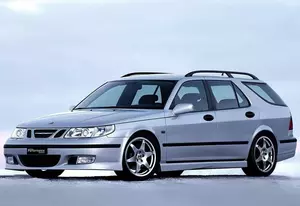
| Vehicle | Curb weight | Difference from world's smallest | Weight to power ratio | 0—60 mph acceleration ratio | Consumption ratio |
|---|---|---|---|---|---|
| 2.3 T |
1565 kg / 3451 lbs |
1140 kg (2514 lbs) heavier | 7 kg to 1 hp | 230 kg/s (507 lbs/s) | - |
| 2.0 T |
1510 kg / 3330 lbs |
1085 kg (2393 lbs) heavier | 10 kg to 1 hp | 127 kg/s (280 lbs/s) |
168 kg/L (370 lbs/L) |
| 3.0 i V6 24V |
1650 kg / 3638 lbs |
1225 kg (2701 lbs) heavier | 8 kg to 1 hp | 199 kg/s (439 lbs/s) |
146 kg/L (322 lbs/L) |
| Vehicle | 2.3 T |
|---|---|
| Curb weight |
1565 kg / 3451 lbs |
| Difference from world's smallest | 1140 kg (1140 lbs) heavier |
| Weight to power ratio | 7 kg to 1 hp |
| 0—60 mph acceleration ratio | 230 kg/s (507 lbs/s) |
| Consumption ratio | - |
| Vehicle | 2.0 T |
| Curb weight |
1510 kg / 3330 lbs |
| Difference from world's smallest | 1085 kg (1085 lbs) heavier |
| Weight to power ratio | 10 kg to 1 hp |
| 0—60 mph acceleration ratio | 127 kg/s (280 lbs/s) |
| Consumption ratio |
168 kg/L (370 lbs/L) |
| Vehicle | 3.0 i V6 24V |
| Curb weight |
1650 kg / 3638 lbs |
| Difference from world's smallest | 1225 kg (1225 lbs) heavier |
| Weight to power ratio | 8 kg to 1 hp |
| 0—60 mph acceleration ratio | 199 kg/s (439 lbs/s) |
| Consumption ratio |
146 kg/L (322 lbs/L) |